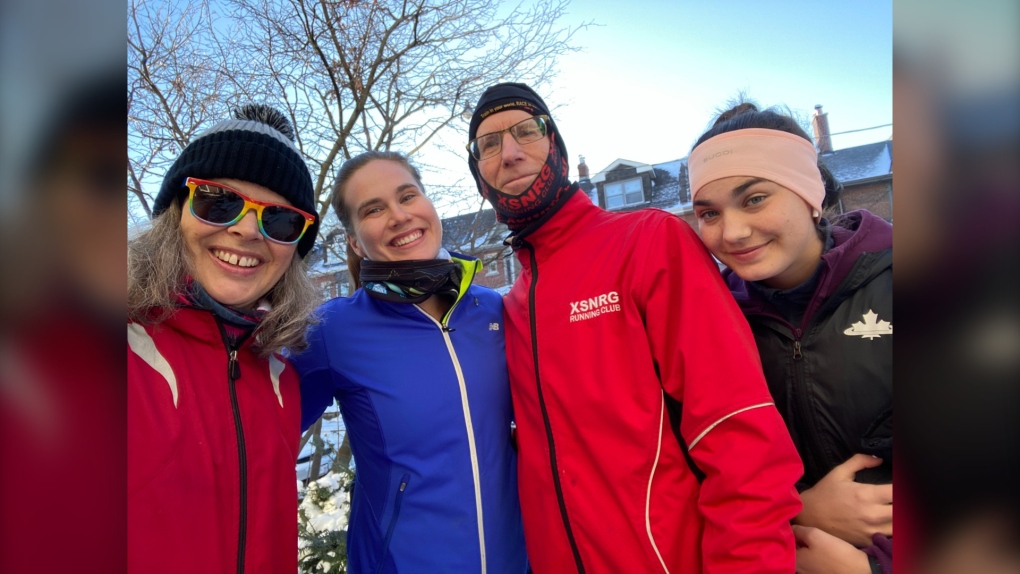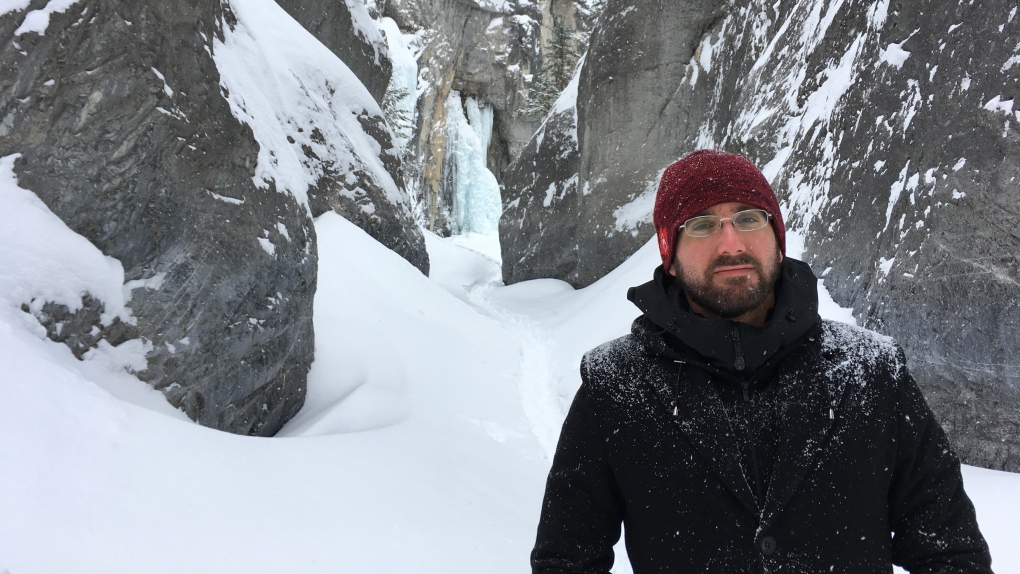Winter storms have left most of Canada covered in snow and with a likely polar vortex on the way, many are seeking shelter inland.
But for some, like Anne Francis, the cold weather is welcome.
At first, the idea of running outside in the cold Canadian winter was overwhelming, but with the help of a good team and her group of runners, she said she now prefers it.
“It took me a few years to feel comfortable running outside all winter. I assumed in winter you did other things or went to the gym,” she told CTVNews.ca in an interview Friday from Toronto. “After many years of running outside in winter… I really enjoy it and feel more comfortable.”
Francis and other winter enthusiasts spoke to CTVNews.ca about taking advantage of Canada’s colder months by dressing appropriately and creating an outdoor community dedicated to enjoying the snowy weather.
Francis, the editor of Canadian Running Magazine, has been running for 20 years, a hobby she took up again after her three children left home.
With the encouragement of her husband and the drive to overcome the “mental roadblock” of boredom and exhaustion while running, Francis gave herself permission to explore the sport further.
WHAT TO BRING FOR WINTER ACTIVITIES
When facing the snow, Francis said layering is key to making sure you don’t overheat.
“Generally, the rule of thumb is to dress like you’re 10 degrees hotter than you really are,” she said.
Francis decides how many layers to wear based on whether the activity is high impact (running) or low impact (walking).
“(If) temperatures are around zero degrees Celsius, you’ll generally want to wear tights and maybe a long sleeve and jacket,” he said.
The layer closest to the body is the most important, Francis said, it should be made of “moisture-wicking material.”
“The last thing you want when you’re running in the winter is to sweat and not have a place for your sweat to evaporate. That’s how you cool down and get cold,” he said.

Judy Andrew Piel, community support coordinator for Ottawa-based outdoor activities company Bushtukah, told CTVNews.ca that the layer closest to the body should be made of synthetic material or merino wool.
“Then your outer layer, you have to make sure it’s breathable because you’re going to be colder if you get hot and sweat under your clothes,” he said in a phone interview Friday while running.
Piel said that for those skating on the Ottawa Canal or downhill skiing, a “bulky” winter jacket is best. For running or cross-country skiing, he prefers the GORE-TEX brand.
“Generally you can run in cross-country gear, they’re interchangeable,” he said. “Many cross-country jackets are designed to have more wind protection in the front…and more breathability in the back.”
Both runners advise people to keep their heads warm with a hat or headband.
SAFETY PRECAUTIONS
Along with snow and cold temperatures, Canadians see their fair share of ice. Extra precautions should be taken for those eager to get out on slippery days.
Michele Guimond, vice president of marketing for Mountain Equipment Company (MEC), described herself as an outdoor enthusiast.
“I’m a passionate, kind of West Coast year-round woman who loves trail running and skiing, cross-country skiing, ski touring, mountain biking and gravel biking” he told CTVNews.ca in an interview on Friday.
Guimond, born and raised in Vancouver, said nature has always been a part of her life, especially in winter. Even when temperatures drop, Guimond can be found doing summer sports in winter.
One of her favorite ways to get outdoors is to ride a mountain bike. When she’s in the mountains, no matter what the activity, she brings “microspikes,” which attach to the sole of any shoe to provide extra traction on the ice.
“Some (microspikes) are better for running, very light, some are better for walking longer distances and are a bit more robust,” Guimond said.
Since the sun sets earlier, Guimond said he always carries lights with him. In the city, he advises people to wear reflective clothing.
Whether it’s daylight or not, Guimond said she never hits the trails alone.
To feel more secure, Francis said that when she goes running solo in Toronto, she carries a phone.
“Many phones now come with built-in security features and you might get in trouble… It’s good to have your phone with you if you do,” he said.
HOW TO STAY MOTIVATED
When it’s minus 25 degrees Celsius with a wind chill factor, it can be easy to avoid going outside. Franz Plangger’s motivation comes from knowing that he will have fun.
“I’ve been lucky enough to have great times outdoors no matter what the weather,” he told CTVNews.ca in an interview Friday from his home in Calgary.

In the past, Plangger has worked for Outward Bound Canada, a company that provides education and outdoor tours. He has been lucky enough to participate in expeditions all over Canada. The most memorable was a dog sledding adventure in Ontario’s Algonquin Park.
Now, as executive director of the Outdoor Council of Canada, an organization that advocates for barrier-free outdoor programming, he tries to encourage others to get outside.
“I think the easiest entry point is to take a walk in a park,” he said. “So cross-country skiing is also relatively easy to do. There are a lot of old cross-country skis being sold second-hand.”
Plangger said people should look for an outdoor club in their community to create a social connection with nature.
Guimond and Francis said they both find motivation to be outside of their friends and family.
“Hanging out with friends and being social is definitely part of it,” Guimond said. “You know you’re always going to feel better after doing it.”
Another motivator for Plangger is that the Canadian winter can offer a moment of reflection.
“Enjoying the outdoors doesn’t have to be a great adventure,” he said. “The beauty of wilderness is that you just need to look around you…It gets you off your to-do list and then gives you time to be in the moment.”
